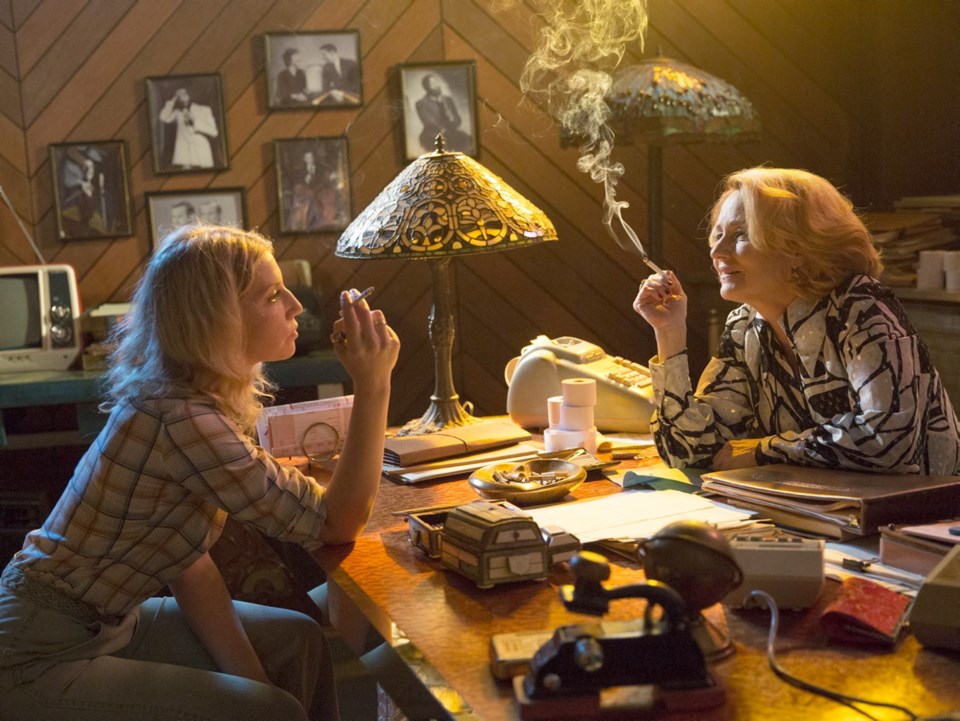SANTA MONICA, California — Jim Carrey got his comedy start in stand-up, but he’s pretty good at sit-down, too.
Spinning in a red, gyroscopic cone-chair that nearly tips, an upside-down Carrey advises our photographer: “Catch me when you can. Just let it happen.”
For extra effect, he plays art director in his loft-like painting studio, instructing an assistant to surround the cone with shark fins — because what artist doesn’t have a shelf full of plastic shark fins.
In the middle of his zany performance art, Carrey waxes ironic: “I’m a serious producer.”
That he is. The big-screen star of films as varied as Ace Ventura: Pet Detective, The Truman Show and Eternal Sunshine of the Spotless Mind is an executive producer of Showtime’s I’m Dying Up Here (tonight on CraveTV in Canada), a drama set at a fictional Sunset Strip comedy club in the 1970s, an era in which George Carlin, Andy Kaufman, Robin Williams and Richard Pryor built or re-built their comic personas.
Moments after defying gravity, Carrey, 55, joins executive producers Michael Aguilar and Dave Flebotte, the creator of the series based on a non-fiction book by William Knoedelseder.
It’s a passion project, as all three have roots in the comedy-club scene and know the terror of being alone on stage, where a poorly received routine can make comics feel like they are “dying.” The series, set in 1973, centres on Goldie’s comedy club, where the comics are composites and its kingmaker/owner (Melissa Leo) echoes Mitzi Shore of L.A.’s fabled Comedy Store, where a teenage Carrey made an inauspicious debut in 1979.
“I auditioned for Mitzi the same night as Bill Maher. He did a nice set and got on as a regular. When I went on, the microphone fell apart in my hands and I knew it was going to be a bad night,” Carrey says. His routine “wasn’t so good and I didn’t ask Mitzi what she thought. I ran past her table, averted my eyes and went back to Canada for two years.” (Things worked out OK for the kid when he returned in 1981, making his first appearance on Johnny Carson’s Tonight Show a couple of years later.)
Carrey’s personal stories are reflected in the series. Budding but broke comic Ron (Clark Duke), who’s renting living quarters in a bedroom closet, encounters a pantsless young woman making bacon in the kitchen, as Carrey did. Rising comic Bill (Andrew Santino) wins an appearance on The Midnight Special, a variety series, then loses it after a poor club performance. Carrey had a Carson appearance pulled under similar circumstances.
Although Dying takes place more than 40 years ago, in the era of Vietnam and Watergate, the producers say it still resonates. The public lost trust in leaders and institutions, Americans were divided and comics poked holes in societal hypocrisy.
“It’s happening now,” too, Carrey says. “Jon Stewart, John Oliver, Bill Maher — comics are the news. They always have been. Now, they’re getting recognized.”



